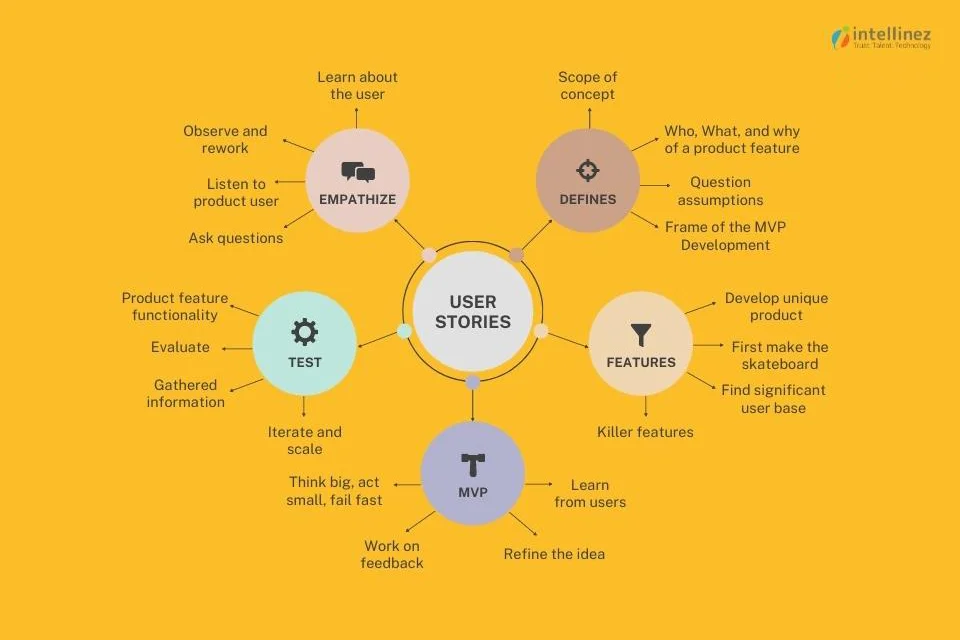There is no doubt in the significance of low code development for driving innovation. Even, enterprises and start-ups today are constantly looking for ways to innovate and develop newer solutions based on customer inputs and rapidly changing market trends. However, the process of custom software development using traditional development techniques can be slow, full of bugs, and involve a large team, making it difficult to achieve the desired outcome. This traditional method of development often comes with several challenges, which are given below.
Challenges Of Traditional Method Of Development
- High Resource Cost: Traditional software development often requires a large team of developers and other specialized personnel, which can be costly in terms of time and money.
- Complex Project Management: With a large team working on a project, communication can become complex and difficult, leading to delays and misunderstandings.
- Slow Pace of Development: Traditional software development can be slow and tedious, making it difficult for companies to keep up with the fast-paced nature of the technology industry.
- High Risk of Bugs and Errors: Traditional software development is often prone to bugs and errors, which can be costly and time-consuming to fix.
Low-code Development Enabling Businesses to Work Smarter
Given these challenges, many companies are held back in their ability to innovate and stay ahead of the competition. Start-ups and SMEs in particular may struggle to keep up with the demands of traditional software development, which can limit their ability to grow and succeed. Low code software development platforms can help companies overcome these challenges and drive innovation and rapid product development.
- Speed of Development: Low code development platforms use visual drag-and-drop interfaces and pre-built templates, which make it easy for non-technical users to create functional applications without writing extensive amounts of code. This allows for faster development and deployment of MVPs and helps companies to keep up with the fast-paced nature of the technology industry.
- Ease of Communication: With a low code development platform, the need for a large team of developers and other specialized personnel is reduced, which can simplify communication across the team. This can lead to fewer delays and misunderstandings and help to ensure that the MVP meets the needs of the target market.
- Reduced Risk of Bugs and Errors: Low code platforms are typically less prone to bugs and errors, which can be costly and time-consuming to fix. This can help to reduce the overall risk and improve the quality of the MVP.
- Flexibility and Scalability: Low code development platforms allow for rapid scaling and deployment, once an MVP has been validated and is ready for production, which makes it easy to scale and deploy the application, reducing the need for additional development resources.
- Cost-effective: Low code development platforms can be cost-effective as they reduce the time and resources required to develop and launch a new product, ultimately leading to a faster time to market, reduced development costs, and increased revenue.
- Ease of Project Management: Given Low code software development process requires less resource involvement as compared to traditional development processes managing the team and getting to end results is considerably faster, less buggy, and easy to manage. Owing to a smaller number of people involved in the process communication within the team is easier to make and effective compared to larger teams.
Use Cases Of Businesses Using Low Code Development For Driving Innovation
These are some examples of how large enterprises are using low code development for driving innovation and beat competition. These companies have been able to create new solutions quickly, reduce development costs, improve customer experience and drive revenue growth by using low code platforms.
- AIG: American International Group (AIG) used a low code development platform to develop a new claims management system for its commercial insurance business. The platform allowed AIG to quickly prototype and test the system, and it was able to be deployed in a fraction of the time it would have taken using traditional development methods. This new system improved the claims process, resulting in cost savings and increased efficiency for AIG.
- GE Transportation: GE Transportation used a low code software platform to develop a new digital solution for its rail customers. The platform allowed GE to quickly prototype and test the solution, and it was able to be deployed in a fraction of the time it would have taken using traditional development methods. This new solution improved the customer experience, resulting in increased revenue for GE.
- The Home Depot: The Home Depot used a low code platform to develop a new e-commerce platform for its online store. The platform allowed The Home Depot to quickly prototype and test the platform, and it was able to be deployed in a fraction of the time it would have taken using traditional development methods. This new platform improved the customer experience, resulting in increased revenue for The Home Depot.
- T-Mobile: T-Mobile used a low code development platform to develop a new customer management system for its business customers. The platform allowed T-Mobile to quickly prototype and test the system, and it was able to be deployed in a fraction of the time it would have taken using traditional development methods. This new system improved the customer experience, resulting in increased revenue for T-Mobile.
- Telstra: Telstra, Australia’s largest telecommunications company, used a low-code platform to develop an app that allows customers to manage their accounts and services, as well as to get support. Using a low-code platform, Telstra was able to deliver the app in a fraction of the time and costs, compared to traditional development methods. This new app improved the customer experience, resulting in increased revenue for Telstra.
Conclusion
In summary, low code software development platforms provide a valuable solution for companies looking to innovate and develop newer solutions. They offer a faster development process, ease of communication, reduced risk of bugs and errors, flexibility and scalability, and cost-effectiveness, which can help companies to stay ahead of the competition and drive innovation and rapid product development at ease.
Get Started with Low-code Development
If you are a key decision maker at a business looking to build a new product or drive digital transformation, low code development platforms can be a powerful tool for achieving your goals. At Intellinez Systems, with our expertise and experience, we can help you to navigate the complexities of low code development and implement a solution that is tailored to your specific needs.
From prototyping and testing to deployment and scaling, we can support you every step of the way. With our help, you can develop new products and solutions quickly, reduce development costs, improve customer experience, and drive revenue growth. So, if you want to stay ahead of the competition and drive innovation in your business, please reach out to us at [email protected].
Software Development Services
With Our expertise in Software Development, we can create Custom and Enterprise solutions for multiple platforms ranging from web and mobile to the cloud. We also specialize in SaaS Development, UI/UX Services, QA Testing, System Integration and API Development.
Soumya Mishra
Technology Leader proficient in engineering and execution of enterprise-level IT projects and providing support services on the same. Possesses the ability to set functional and technical strategies, converting them to an achievable plan of action, and driving them to realize and achieve customer success. Passionate leader believing in leading by example, possessing strong problem-solving skills and a can-do attitude. Adept at handling cross-functional teams across the globe and motivating them to achieve outstanding and sustainable results to meet organizational goals and objectives! Guiding Quote – “Every job is a self-portrait of the person who did it, Autograph your work with excellence”








































![A Comprehensive Guide to AWS SaaS Architecture [Diagram Included] 84 Aws SaaS Architecture](http://www.intellinez.com/wp-content/uploads/2024/08/Title-image.jpg)





























































































